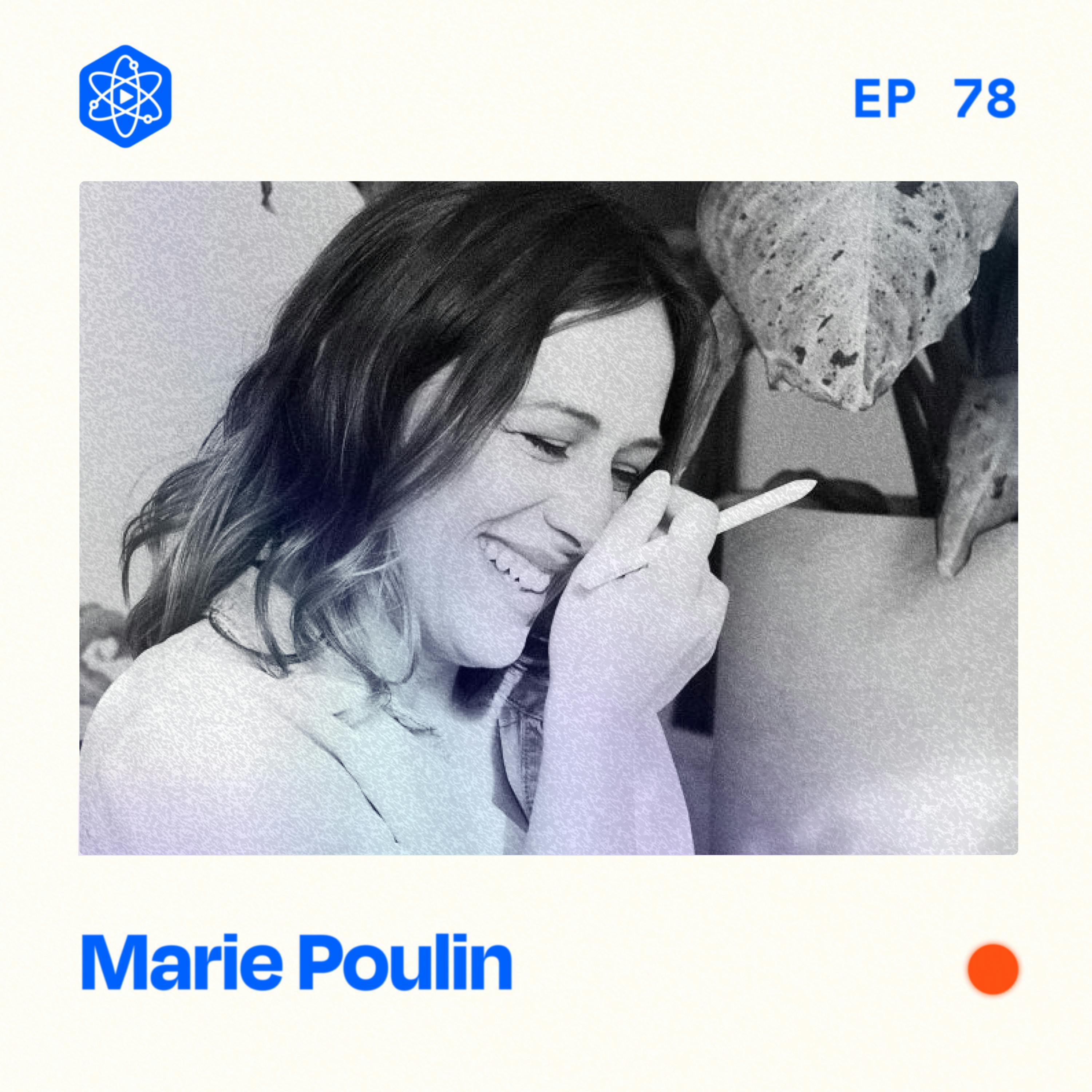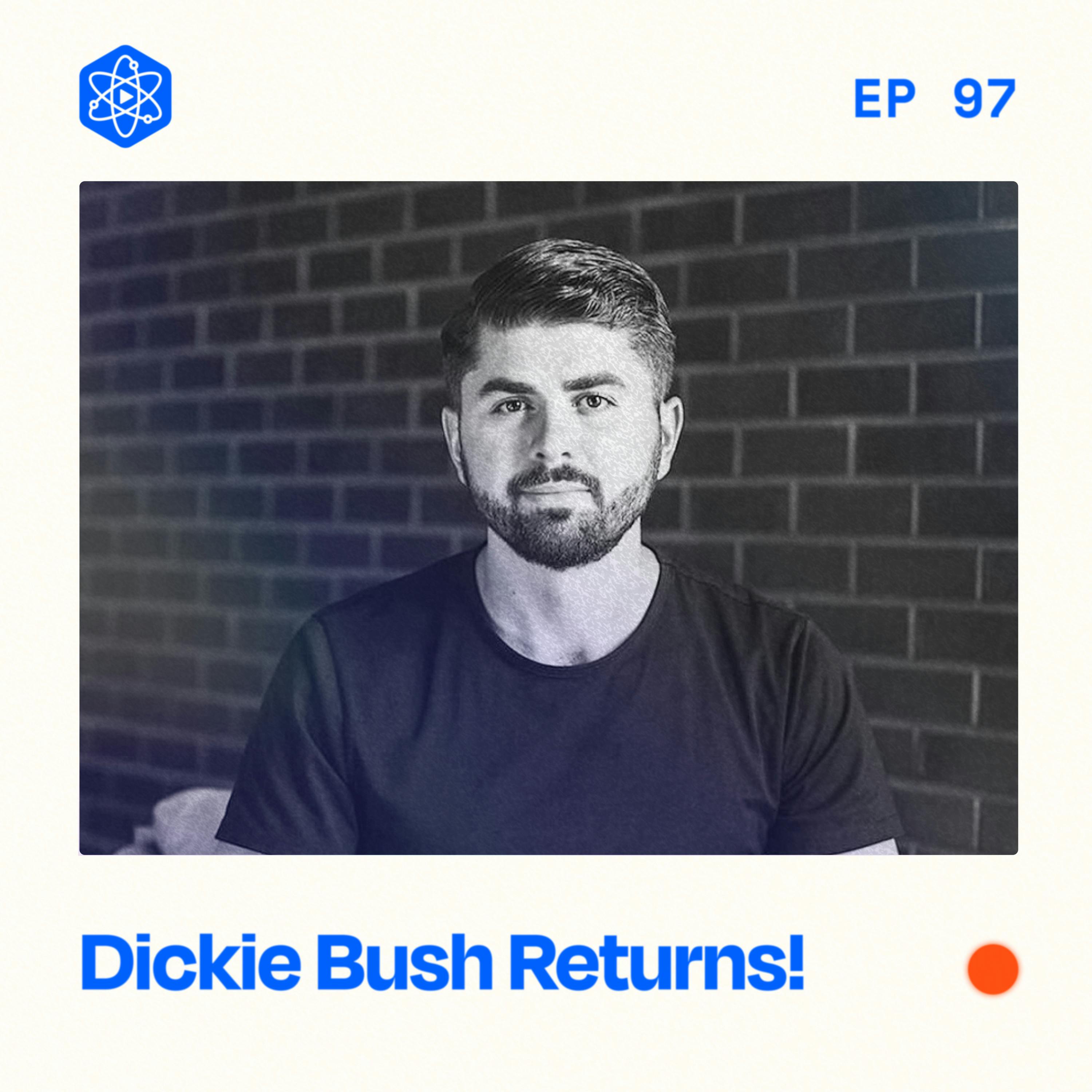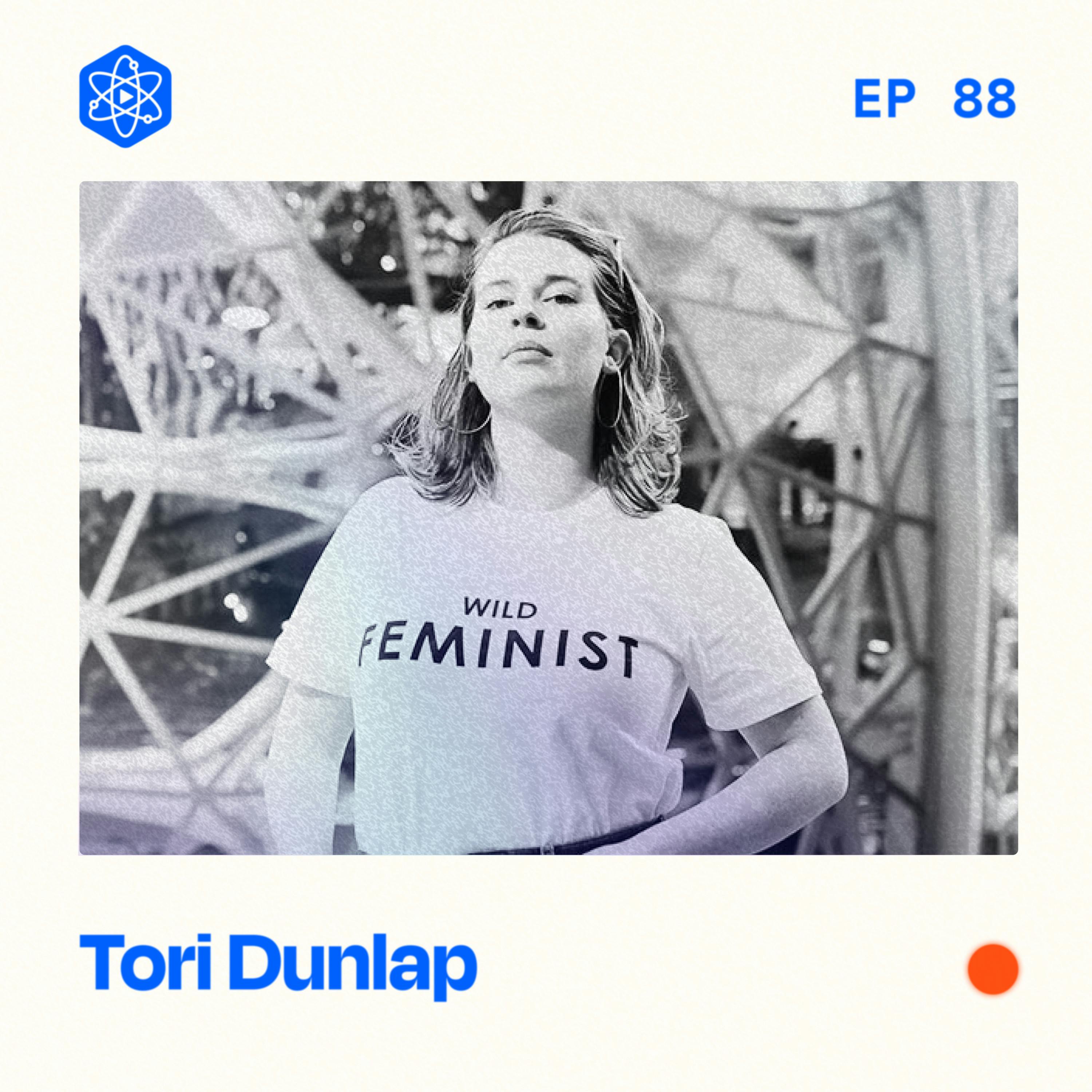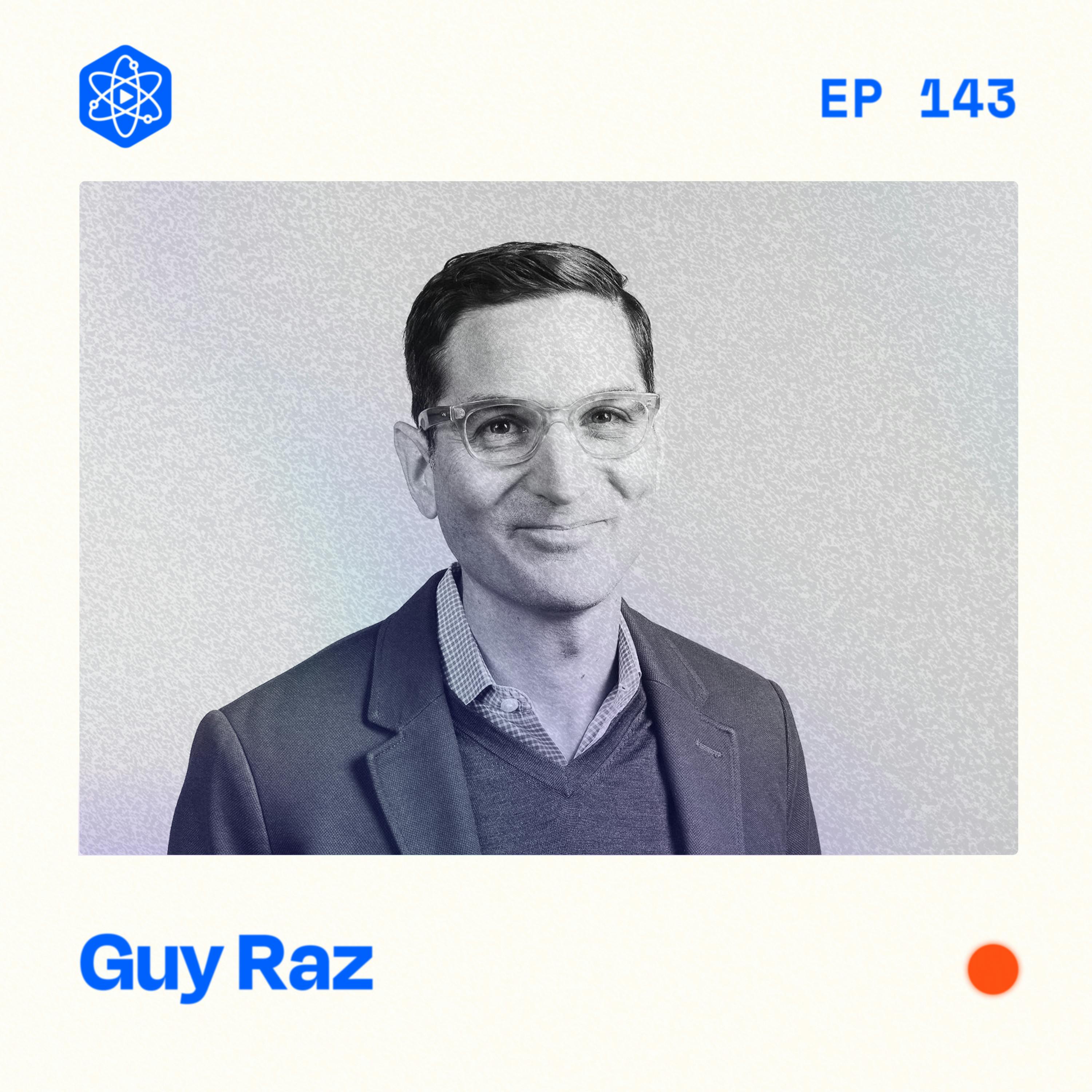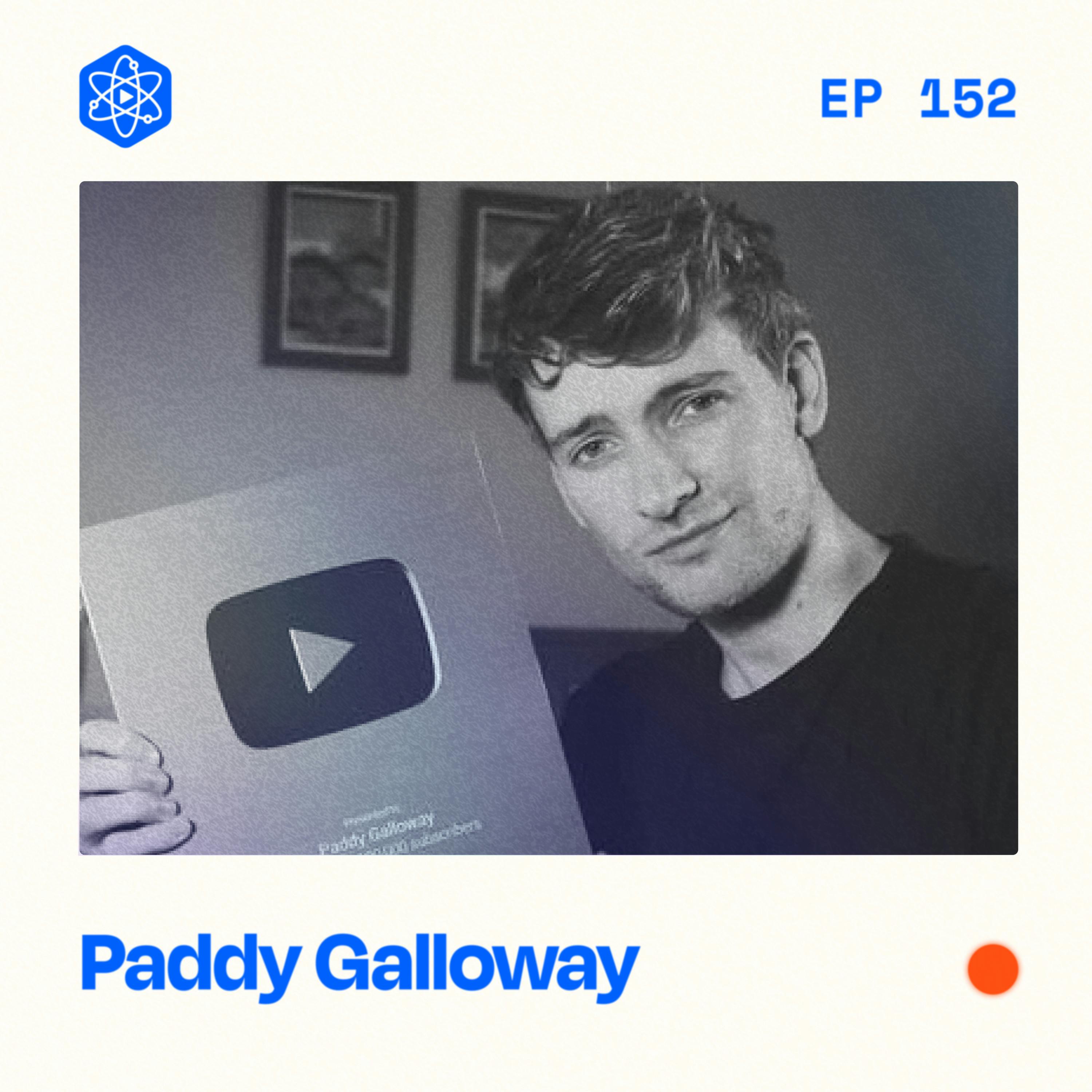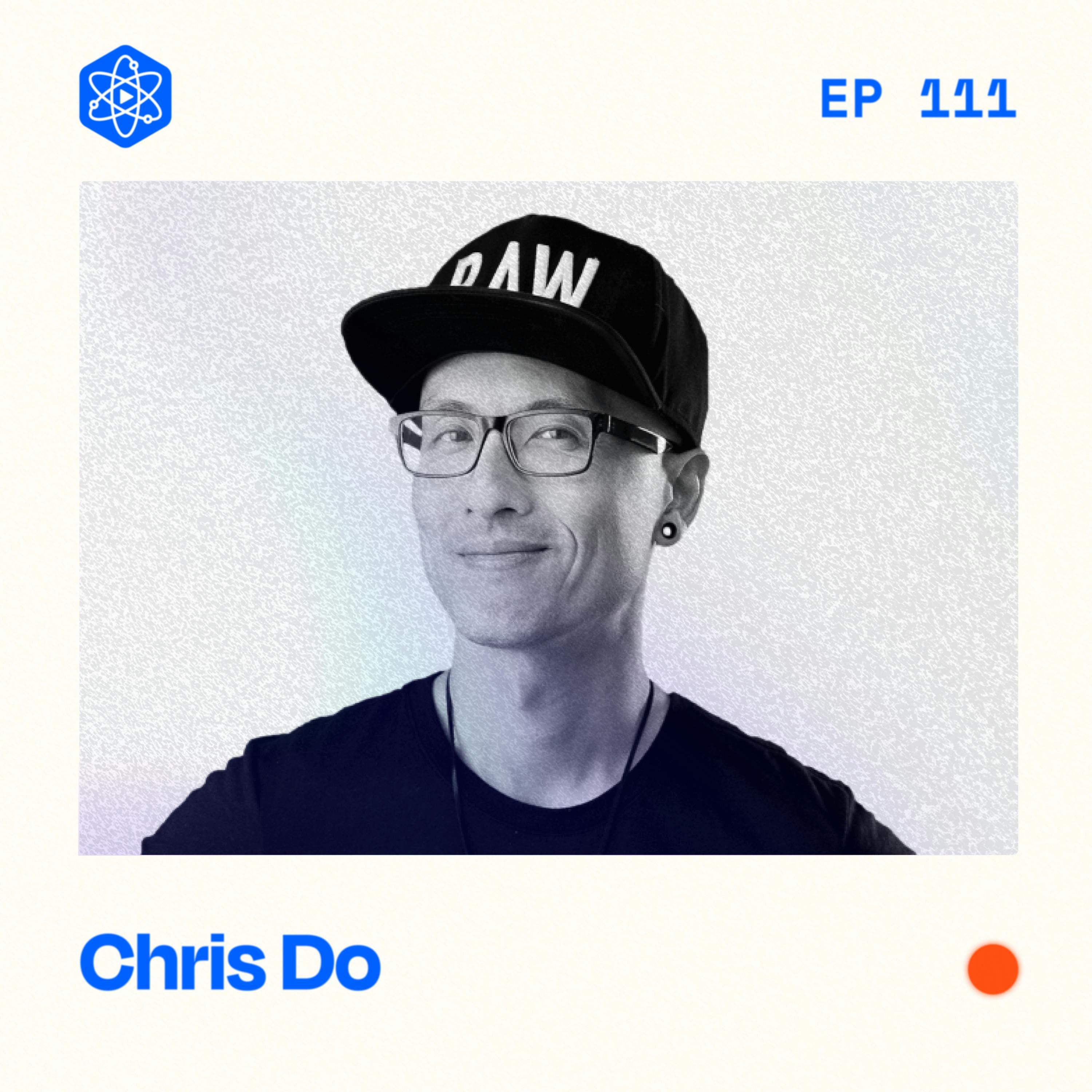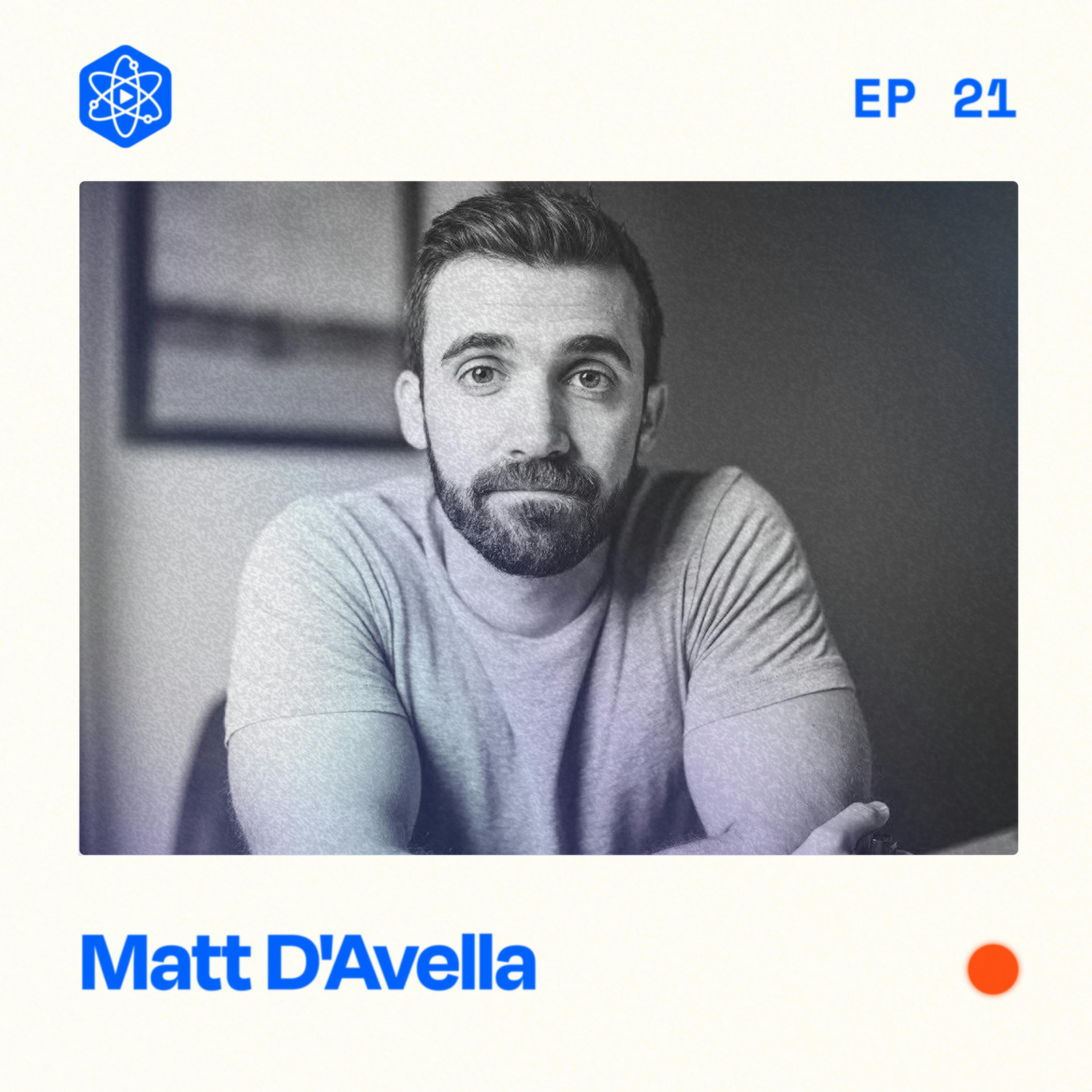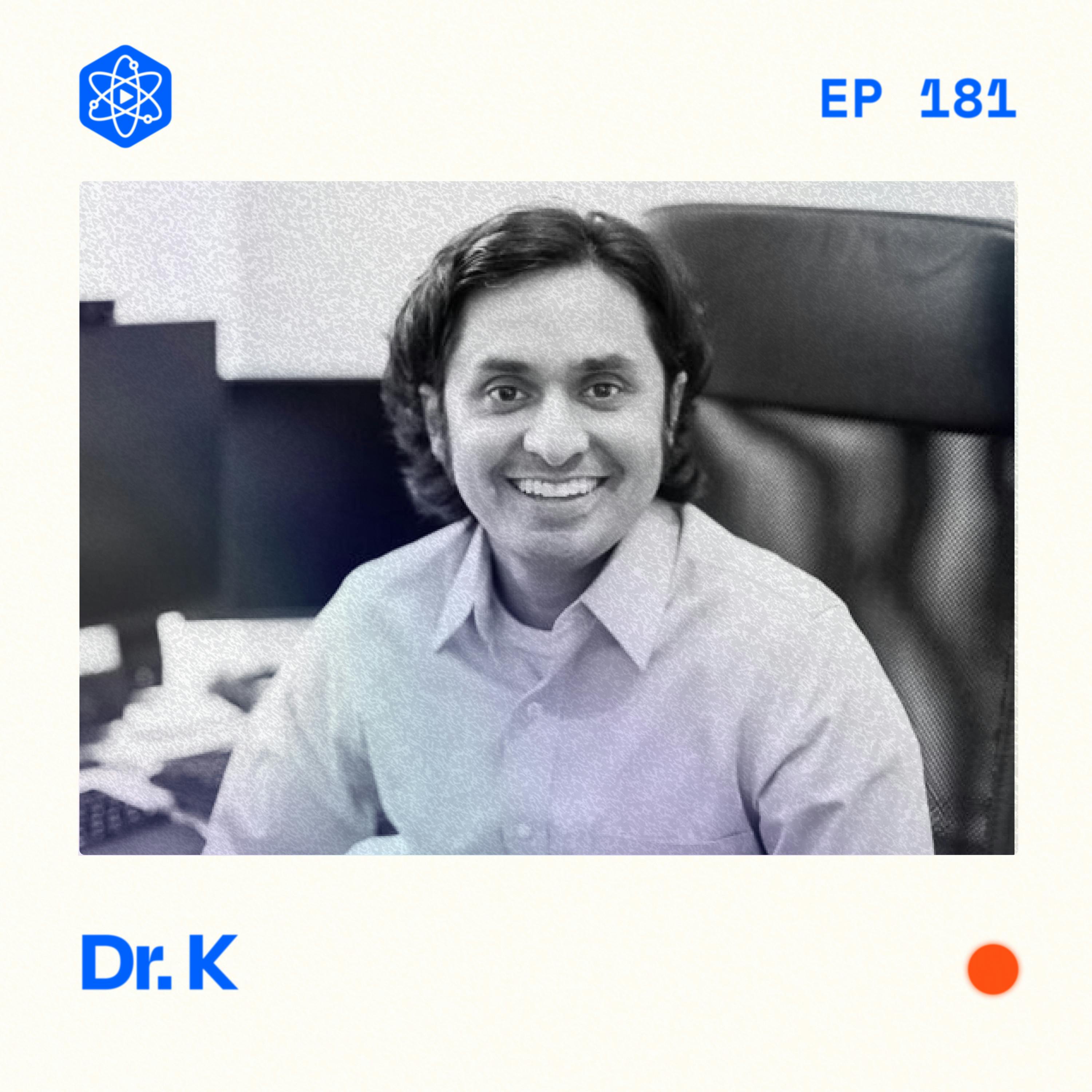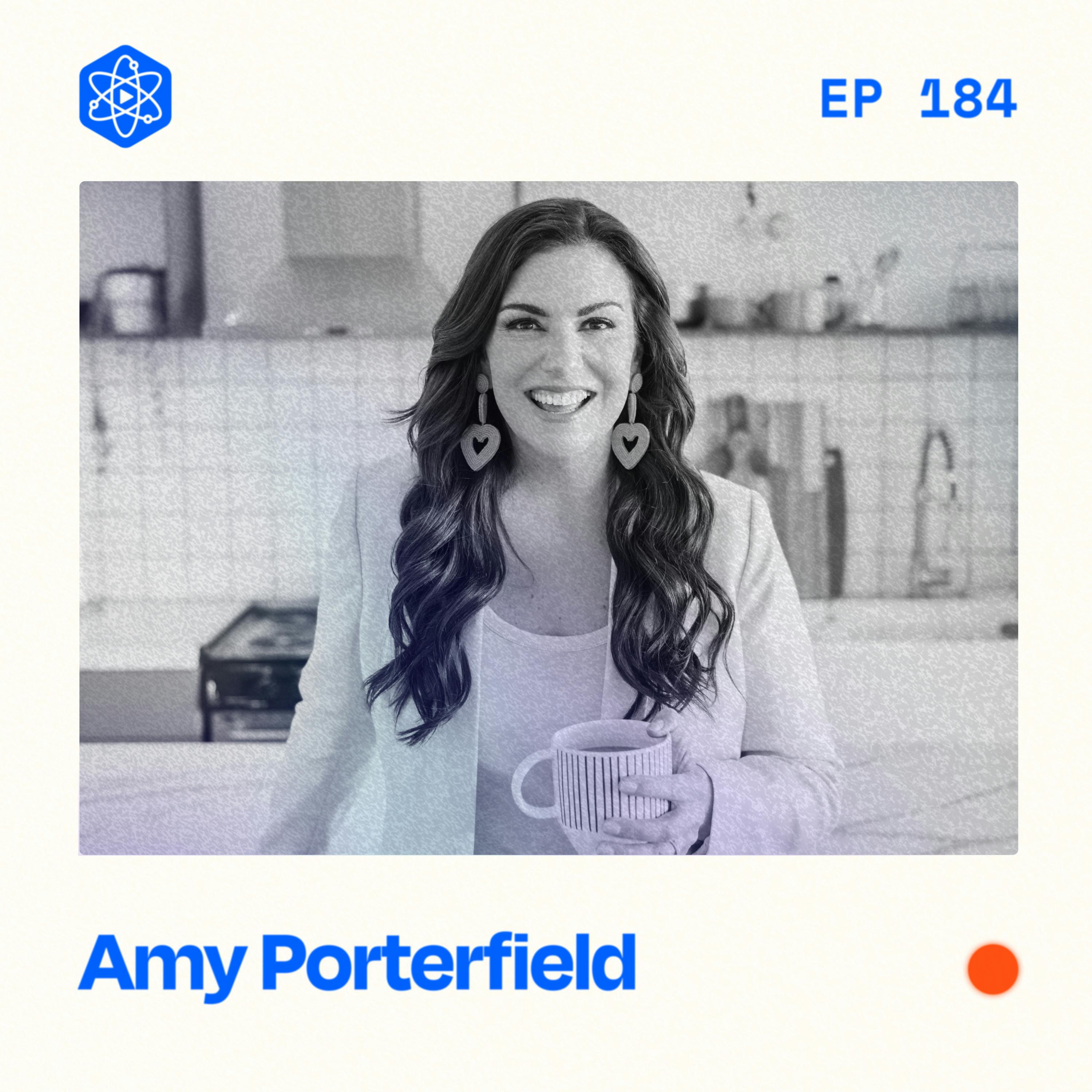Why are so many creators making the move?
Dan Koe, Justin Welsh, and I joined Substack in the last couple of weeks.
In this episode, I explain what’s going on, my own motives, and why you should (or shouldn’t) consider making the same move.
Full transcript and show notes
***
RECOMMENDED NEXT EPISODE
→ #251: Behind the Scenes: What I’m quietly working on
***
ASK CREATOR SCIENCE
***
WHEN YOU'RE READY
📬 Creator Science Newsletter
🚀 Get CreatorHQ (creator operating system)
🧪 Join The Lab (private membership community)
🧞♂️ Get a Personalized Offer
***
CONNECT
***
SPONSORS
💼 View all sponsors and offers
***
SAY THANKS
Jay Clouse [00:00:13]:
Hello, my friend. Welcome back to another episode of Creator Science. The buzz online last week was Substack. What the heck is going on with Substack? Why is everybody moving to Substack? And by everybody, I mean that either coincidentally or not coincidentally, Justin Welsh joined Substack, Dan Co joined Substack. I joined Substack a few weeks ago now. What's going on? Why are we all joining Substack? Is that the place to be? Should you be moving your newsletter? Well, I don't want anyone to make hasty decisions, and I want to kind of share my perspective on why I moved, why I think other people are getting started on Substack, what it means for you. And really, I think moved to Substack is a misnomer. So let me put that out right now.
Jay Clouse [00:01:00]:
We're not seeing people say, Hey, I have a list on kit and I am going to move that totally to Substack and abandon that. That's not really what we're seeing happen here. What we're seeing happen here is people joining Substack because of opportunity they see on the platform. It's not to say it's a superior email or even newsletter tool generally is to say people are seeing opportunity there. And I've been kind of calling this out for a little bit because what Substack has done in a really thoughtful and smart way is step into a vacuum that has been left by old Twitter with their notes feature. If you're not familiar with Substack, there's a couple of things about it that you should know. Number one, it's primarily for long form writing. That is what Substack has been all about long form in-depth writing and paid subscriptions.
Jay Clouse [00:01:59]:
It's about helping writers earn a living with their writing. So it's not unlike other long form editors you see on WordPress or any other CMS, even LinkedIn articles. The interface for writing long form on Substack looks very, very familiar. That's not what makes Substack special. What makes Substack special are the people who use and read Substack. They are a little bit more heady, a little bit more thoughtful, and they want long form writing so much so that they have a large user base of people that actually pay their favorite authors on Substack to have access to their long form writing. And as a long form person, that is certainly attractive to have potentially a new audience for long form writing. What's going on with Justin and Dan Coe? Well, they are taking different approaches and different approaches for me as well.
Jay Clouse [00:02:57]:
Starting with Dan, Dan seems to just be cross posting his long form writing from his existing newsletter over to Substack and leveraging their notes feature. I think this makes a whole lot of sense because Dan has proven he is very, very good in short form and he also writes long form. So the marriage of these two things on Substack is really what makes it powerful because historically, if you were writing a long form newsletter, how do we get people to it? Well, we might go do something in short form and try to direct people there. That's the strategy on X is the strategy on LinkedIn, but it's not very efficient because those platforms don't want you to go off platform. So trying to direct people to your website, to subscribe or read an essay, it's just not a very smooth journey for the reader. You lose a lot of people in transit, whereas Substack, these two things are married together. They have a built in short form area with notes and they have long form. In fact, when you publish a long form essay, it gets published to your profile on notes.
Jay Clouse [00:04:05]:
It's as if you were publishing on Twitter and you shared a link to your blog, except they're both on the platform and Substack wants you to read that. So it's a really smart marriage. Now, from what I can see from people who have been active on Substack for a long time, Notes is a polarizing part of the platform. It seems like a lot of the long form writers who have been on Substack for a long time. Don't particularly like notes. They don't particularly want to engage with writing short form notes because they are long form people. And I get it. I don't think you have to use notes to be successful in long form.
Jay Clouse [00:04:43]:
I do think that it is a unique advantage of the platform. If you are somebody who enjoys doing short form and long form and Dan Coe, Justin Welsh, obviously very good at short form. So this helps them a lot. So I told you Dan's strategy. Dan's strategy seems to be sharing his existing long form writing on Substack. I don't know what SEO implications are for that. If you were to simply copy the same content from your existing long form newsletter over to Substack, I think there's probably some sort of SEO impact you should be thoughtful of, but I don't quite know. Justin's strategy is he's creating an entirely new newsletter.
Jay Clouse [00:05:25]:
It's called Unsubscribe. It's helping people get off the beaten path and build a business that supports their life. So it's not completely distinct from what he's been writing about, but it's a new product because he's building a membership. He has paid memberships turned on. He has his comments turned off except for paid members. He has the opportunity to do in person meetups as a paid member. And I think this is interesting. I think what Justin and a lot of creators have learned is that recurring revenue is nice.
Jay Clouse [00:06:00]:
It's nice when you have a model that is recurring, that provides recurring value, you get recurring compensation. In a previous world where he's selling mostly one off courses of different price points, recurring revenue isn't a thing. He's had some recurring revenue products in the past. He sold templates for a while. I don't know if he's still doing that or not, but this new Substack offering gives him recurring revenue, compensates him for writing and also offers a very lightweight community experience. Communities are hard when you do like a full on online community. That's a difficult thing to make good as a good experience is a really difficult thing to maintain for a long time. Substack has community features, but the extent of Substack's community features are comments on posts, subscriber chats, which is basically like think of it like an Instagram broadcast channel.
Jay Clouse [00:06:58]:
People who subscribe to your writing can access your chat, but you can also lock that down by whether people are paid subscribers or not, what level of paid subscriber. So their community features, you can basically sell a membership with access to the community. The community being, you can now comment on these posts. You can communicate in our subscriber chat. They even have a toggle to say, can these people start chats and a subscriber chat? Can they make their own post or can they only reply on chats? So it's actually very, very lightweight from a community perspective. We're not talking about a forum here. It's literally a single feed experience. And when you have a scale and aren't necessarily driven to be a online community person, this is a lightweight alternative.
Jay Clouse [00:07:48]:
That feels kind of nice. Now Justin's promising to do these in person meetups as part of being a member of unsubscribe. I think that's smart. I think we're going to see a marriage of online and offline communities because I think five years from now, we won't say I'm a part of an online community. We'll just say I'm a part of this community because the surviving communities five years from now will be those that have online and in person experiences. I think you need both. I think you need a marriage of those two things to make a remarkable and worthwhile experience. And so I think it's a smart idea to get started now.
Jay Clouse [00:08:25]:
You know, we're doing that in the lab with our IRL event in June. It's kind of crazy. It's coming up in a month now. We are having almost 40 members of the lab meet for two days in Boise, Idaho ahead of kits crafting commerce conference. We have two full days of planned activities that Mal and I have been putting together and that's a pilot. It's a pilot for a couple of things. Do we enjoy it? Do people find value in it? And also, we need to figure out the economics of it. For events in the lab, I'm not trying to make money on them, but I'm also not trying to lose money on them.
Jay Clouse [00:08:59]:
And the way things are tracking right now, I think we're gonna lose some money on this one. But that's okay because this is going to give us higher fidelity into what are the things that are really driving our costs. What are the parts of the experience that we really want to do well, and we are paying for that learning experience while also creating a new tradition and experience within the community. So assuming this goes well, it's very possible we do another in person event later this year, if not early next year, for sure. But long term, I really want to have pop up events all over the world where we have pockets of geographic density within our members. And I think again, five years from now, the memberships, the communities that survive are going to be the ones that really do marry this in person and online type of thing. So that's, what's going on with Justin and Dan. They both see this as a way to diversify, start new product lines, grow their audience.
Jay Clouse [00:09:54]:
Dan seems to be doing the same thing on a new platform. Justin seems to be doing kind of a new thing on a new platform. And I'm leaning more towards Justin side of things where I'm doing something a little bit new, which I will tell you about after this short break. Okay. So let me talk about my goals for Substack, some of the other benefits that I'm seeing on the platform, platform, as well as some concerns and challenges with the platform that I think you should know if you're considering joining. So my goals, first and foremost, I want to become a better writer. I've said in a couple of places that I am working on a new book project. We are in the middle of putting a proposal together right now, and that book will be highly relevant to the creator science audience, but I think it will also be relevant to a broader audience beyond that.
Jay Clouse [00:10:41]:
And they're going to be aspects of that book that I really want to write for the first time test those concepts. Some of them will be relevant to the creator science audience. And again, some of them will not. So I wanted a place to share that writing. I've had a personal blog on Ghost at j. Blog for a little bit. I haven't been writing to it as much. Growth on Ghost is a little bit harder than on Substack because Substack has some built in discoverability that I'll talk about.
Jay Clouse [00:11:09]:
But I'm now moving that list over to Substack, and this is where I'm gonna do some practicing of new types of writing along the lines of trust, relationships, communication, more human broad issues that I have thoughts and experience on that I kind of want to test for a broader audience outside of creators and even outside of business. So to do some of that writing especially the stuff that's outside the realm of creators, I wanted to have a smaller, safer, quieter place to do that because I'm a sensitive boy. And also, it just wouldn't make sense in the creator science container. Now, being at the helm of creator science has also offered me a couple of new opportunities. One of them being I can have the experience of being a beginner again. I've been doing this for eight years now, and the creator science newsletter goes out to about 64,000 people a week. The podcast has 30,000 downloads a month. The YouTube channel is at 125,000 subscribers.
Jay Clouse [00:12:11]:
So I have a lot of advantages that creators starting today don't have, and I'm fairly far removed from the challenges of those creators. So I really wanted to put myself back in the saddle of, okay, I'm joining Substack. I have zero subscribers. I, of course, still have some benefits unless I wrote under a pseudonym. It wouldn't be a pure experiment or experience. But starting from zero, using the assets I have at my fingertips without actually importing, you know, 64,000 subscribers. I'm not gonna do that. It still gives me the feeling of sharing to a small audience again, which I think is exciting.
Jay Clouse [00:12:51]:
And it also gives me empathy for my readers on the creator science side. I have an increasing number of members in the lab and folks who read my newsletter who are on Substack and ask me Substack related questions. And I didn't have a great working knowledge of that platform. I had strong opinions. I've been fairly critical of Substack, and I'll talk more about why here in a little bit because that hasn't totally gone away. But I didn't have a strong working knowledge of the platform. And I think part of my role with creator science is to have a strong grasp on the tools that are available that people are using so that I can give well informed opinions and direction and let people make their own decisions. You know, I have never been so sponsored by any platform where I felt like I couldn't criticize that platform or recommend what I think is the best option for somebody at that point in time.
Jay Clouse [00:13:43]:
But I do need a good working knowledge, and I feel like Substack was a little bit of a blind spot for me. And lastly, there are parts of my life that I want to write about and share that again just don't fit inside of the creator science container. At creator science, I am a teacher. Some people have more interest in my personal life than others, but there are a lot of things that I want to write about that I think that brand has now outgrown a little bit. I shouldn't say outgrown. It's a brand that's more mature where I feel like the needs of the brand and the typical subscriber outweigh my personal interest and curiosities sometimes. So it's it's a place that, again, as a sensitive boy, it's a smaller room that I can share some things with that I'm not feeling brave enough yet to share with the rest of the world. Now I'm two issues into writing long form there.
Jay Clouse [00:14:38]:
I'm two months onto the platform. I have somewhere around 500 subscribers, just a handful of paid subscribers. I just turned this on a couple days ago. But there's some benefits that I've seen that I wanted to talk about. First and foremost, I talked about this complimentary relationship between short form and long form on the platform. And I really think this cannot be understated, especially, again, if you are somebody who has had success on short form writing platforms in the past, if you were loving Twitter back in the day, if you're on LinkedIn today, if you're playing with threads or blue sky, Substack notes is a fun place to share in short form. I really liked the vibe. There are a bunch of people that I missed from Twitter that I am interacting with there again, because it seemed like the people that I used to interact with day in and day out on Twitter, they're just gone.
Jay Clouse [00:15:25]:
They're not on X anymore. And I've refound a lot of them and met some new friends over on Substack notes. And again, the way that it not only doesn't penalize sharing your long form writing, but proactively does it for you is really something to behold. It's really, really smart design. So if you're equipped to do both short and long form, I just really think they power each other very, very well. Substack also has recommendations. This used to be a innovative feature of Substack, but today with the creator network and Beehive's recommendations, most of your major newsletter options have recommendations. And the platform itself doesn't matter so much as where your network is concentrated.
Jay Clouse [00:16:12]:
If you have friends and colleagues on Kit and their creator network and they wanna recommend you, you should probably go to Kit and do that. If your friends and colleagues are on Substack, then Substack Recommendations is a great place to be because it can really help grow your newsletter quickly when you have these recommendations. But you don't just get them magically. People who recommend you are people who already know and appreciate your work. They're people that you proactively build relationships with. It's gonna take a little bit of elbow grease to do this or having a reputation. So, you know, a lot of people will look at Substack and they think discoverability, they think recommendations, they think that's how I'm going to grow. I don't think that's innately true of Substack or any platform.
Jay Clouse [00:16:54]:
I think any recommendation platform of any newsletter tool, you're going to have to do some work of relationship building and asking for those recommendations, making recommendations yourself, showing that you can send subscribers to other people. That's really important. I already kind of talked about the community features of Substack feeling lightweight and very achievable. I think that's important because Substack can really enable some level of scale. Right? You can have a lot of people subscribe and in community, the more that you promise, the more fulfillment you have on the back end. But the community tools and Substack are highly scalable because they are giving people access to comments or not. They are giving people the ability to reply to your posts in a community chat or not. They're giving you the ability to let people create their own posts in the community thread or not.
Jay Clouse [00:17:46]:
It really doesn't create that many surfaces where there's much fulfillment or requirement. And that's nice for people who want to create some form of community. I do see a lot of writers on Substack will say, we're gonna do lives every once in a while where we stream and that's paid subscribers only. You can have aspects of your newsletter that are paywalled. So only paid subscribers see that that's kind of my strategy. I write a morning journal, not every day, but most days in the style of Julia Cameron's morning pages. So it's just stream of consciousness long form writing and it's me articulating things to myself for the first time that have been ruminating, but I haven't actually said. It's really helpful for me to see.
Jay Clouse [00:18:34]:
For the most part, it's like pure head trash and then me overcoming that head trash. And in my paid areas of my Substack, I'm gonna share some just direct passages from my journal that I think might be resonant or helpful for other people. I'm gonna share updates on my book journey inside the paid subscriber pieces of my Substack, and we have a community chat as well. So just getting started on that, I'm sure it will evolve, and I'll find ways to make it better and better without eating too much into my capacity because the book project is what's a priority right now. But if you are so inclined to support me there, I've gotta say, I underestimated how good it feels to get a paid subscriber for your writing. It just hits different because it just feels like somebody saying thank you. I appreciate you. And the expectations are a lot lower than that of your your typical membership.
Jay Clouse [00:19:27]:
You know, when somebody joins the lab, that's a big investment for them. And I know I need to really deliver for them, which is not a short amount of time on a per person basis. I really try to be accessible and helpful to everybody in the lab, and I put a ton of time into it. The Substack membership is a much smaller investment. The expectations are lower and it's basically saying, carry on, keep doing what you're doing. And that feels really, really great. So I'm excited to explore that, try some unique things. I think bringing a community mind to Substack like I have, I think gives me a unique opportunity to do things a little bit differently than you'll see on Substack.
Jay Clouse [00:20:10]:
But we're just in the early innings, and I'm very cognizant of over committing and and doing things that I can't sustain. But, again, I a paid subscriber on Substack, it just hits different. It feels really, really nice. And as I think about my future, writing this book, if I enjoy the process, writing more books, Being supported in my writing by my readers just feels like the most incentive aligned, awesome way to live your life, and we're starting it. We're starting it today. We'll see how long it takes to be a meaningful revenue stream and if it ever starts to incentivize me to put even more into that side of my life. But for now, this is much more closely akin to a a hobby than a business. And I need to keep it that way because the lab as priority number one in the creator science world, the book is priority number two, I should say.
Jay Clouse [00:21:10]:
And yeah, I just need to make sure I I keep the main thing, the main thing. Okay. So despite those positives, the platform, there's still some concerns and challenges I have with Substack generally. Number one, I was surprised by how difficult onboarding was onto the platform. I shouldn't say difficult. It's not that it was hard. It's just a lot more complex than I was expecting. When you get into the Substack dashboard for the first time, there are a lot of levers to pull a lot of things you can customize and it's not immediately clear what these things do until you start pushing the buttons and trying things.
Jay Clouse [00:21:49]:
And as somebody who, you know, one of my mantras is be different in the details. There are a lot of details on this platform that you can customize. But again, it's not immediately obvious. It's hard to know what to prioritize. And of course, they have in the interface a few steps where they they try to push you down this path to do these five things first. But Substack, their business model is predicated on paid subscribers. So what they want you to do is create a publication, turn on paid subscribers and start writing long form right now. That's what the account setup is really optimized to do is to get you writing long form with paid subscriptions on and try to push people into paid subscribers.
Jay Clouse [00:22:29]:
I think the the flow of subscribing to a Substack is kind of annoying because like you land on somebody's page, it just has a big subscribe field before you really learn anything about it. So okay. I'll enter my email. Then it's like, do you wanna subscribe to these other newsletters that they recommend? Do you wanna have a paid subscription? Do you wanna this? Like, it's so many steps just to get to be be able to read something that I'm trying to subscribe to. I don't know that I have, like, an answer for doing that better or differently. I do think that while I largely achieve the same results with my kit newsletter, I think the experience is better because there are aspects that experience that I can customize outside of Substack that in Substack, you can't really customize. Which brings me to thing number two, that's always bugged me about Substack. You really build a Substack brand probably more than your own brand.
Jay Clouse [00:23:24]:
I bet there are a lot of people who read essays on Substack and they don't know the name of the publication they're reading. They might know the name of the author, but they just think of it as Substack. There are some benefits of that because Substack itself has grown a large audience as part of why discoverability exists on Substack. But as a brand and design person, I don't feel like I have the surfaces to really customize and make it feel like me inside of Substack. It feels like Substack, and I happen to be writing on it. So if I fast forward three years from now, am I still writing on Substack, or have I moved that list out of it? TBD. I think it would really come down to how good is discovery and how good does discovery stay? Do I get more recommendations? And so long term, it's just a ton of new subscribers each day from these recommendations that I can't leave it. Or does the discovery features slow down and encourage me to move somewhere that I have a little bit more control? I'm constantly thinking about Substack's history of making some like surprising decisions with their code of conduct or their terms of service, whatever.
Jay Clouse [00:24:39]:
Cody Sanchez, absolute juggernaut of a creator, she started on Substack. She was a rising author. She was, like, on the leaderboards and stuff. One day, they just shut her Substack down. And the team's response to her when she was trying to talk to somebody also was not good. I haven't dug up her Twitter thread on it, but she was basically like, we were selling a product outside of Substack. It's technically against Substack's terms of service, at least it was, to sell products through Substack that are not processed on Substack. And so they shut her down.
Jay Clouse [00:25:18]:
I don't think Substack polices that very aggressively because there are lots of people who sell things that do not run it through Substack. But that data point and their response, it was just enough for me to be extremely wary of Substack as a platform. So what is likely for me is that once a month, I will probably export a CSV of my subscribers there and just continuously update that most recent CSV. So if something happens to me or to the platform generally, that isn't totally lost. I'm just still a little nervous about that. I don't know that Substack is as creator friendly as it seems. I think they are extremely Substack focused, and that's not different than any other social media platform. Every social platform has its own agenda.
Jay Clouse [00:26:16]:
That's what they care about first and foremost. A lot of people will point to YouTube as being very counter to the rest of the industry because they have more generous ad sharing with creators. But if you look at the history of platforms and decisions that they've made, YouTube is not really less evil than Facebook. Like YouTube has done a lot of damage to society. So any platform that is not your owned platform, like they have their own agenda. They will do what's best for them. Might come at your expense, and you just need to be eyes wide open and understand what you're entering into when you do that. So that's another thing that I'm concerned about generally.
Jay Clouse [00:26:58]:
My first newsletter that I sent out on Substack, the open rate was really low. Like, it was at 20% for a while. I think today, it's up to 31%. They had, like, this weird outage literally within minutes of me sending it. So I think I got a really weird weird first experience. My second issue, which I'll link to in the show notes titled why I joined substack. That second issue has more than a 40% open rate, and it was sent less than twenty four hours ago. So I'm I'm watching this space.
Jay Clouse [00:27:28]:
I really expect my open rate to be above 40%. Not that that's completely accurate. That's just the benchmark I've set for myself based on what I've experienced with creator science. If it's consistently lower than that, I would question Substacks deliverability and might do some investigating. But so far I haven't been super impressed with open rates, but that could be a meeting. It could be a fluke. It's just a little bit too early to tell. I don't have a ton of data yet.
Jay Clouse [00:27:58]:
One of the major other reasons that I've been critical of Substack long term is they are a newsletter platform. They are not an email marketing platform and most creators, you want email marketing as part of your content strategy and on Substack, everything is a broadcast. Everything is a newsletter. If you wanted to send information to your subscribers about a promo that you're doing or some live event that you're doing or whatever, that will be in the form of a newsletter. That's limiting. There aren't automations. There's not good segmentation. It's just wildly different from kit in that way.
Jay Clouse [00:28:36]:
They have some interesting analytics. Like, they have pretty interesting attribution as to where people are coming from. I think they over index on telling you that this coming from Substack, but it makes a good case for the discoverability of Substack. It's just limiting in what you can do with email. You know, even the emails themselves come from jclaus@substack.com. It's not my own domain. It's going through their domain. You can set a custom domain.
Jay Clouse [00:29:03]:
I haven't figured out yet how I want to do that. Somebody that I'm looking at for inspiration, because I think he's been on Substack for a long time and does a really good job is Paul Millard. Paul Millard has really set up and pulled all the levers on Substack, and I think he's got a pretty good implementation, a little complex where he has his own dedicated website and his Substack is a subdomain on that. But the main website, the opt in forms are Substack forms. I think that's probably a pretty good implementation. That might be what I do as well. So if I do at one point decide to leave Substack, the website people are familiar with going to would be my own, but we'll see. Still figuring that out.
Jay Clouse [00:29:44]:
Ultimately, one of the bigger concerns that I have with this whole effort is that it may generally just be a distraction from doing some of the hard things that I need to do in the core business. But it's fun to have a hobby. It's fun to have something you just feel really strong pull towards. Sometimes you need a little bit of a, palate cleanse from your day to day, and this is giving me a little bit of that palate cleanse as well as a place that feels exciting to test my writing. Okay. That's the episode. That's what's going on on Substack in my opinion. If you want to be an early supporter of me on Substack, I'll link to that in the show notes.
Jay Clouse [00:30:26]:
I, of course, would truly appreciate it. You'll be part of a very small group right now, so you'll get lots of access to me in the chat. And I hope to make it worth your while. Of course, if it's ever not worth your while, stop paying for the subscription and that's totally fine. But I appreciate your time and attention even if you subscribe just for the free version of it. Link is in the show note for that. I hope you're having a great week, and I'll talk to you next Tuesday.








